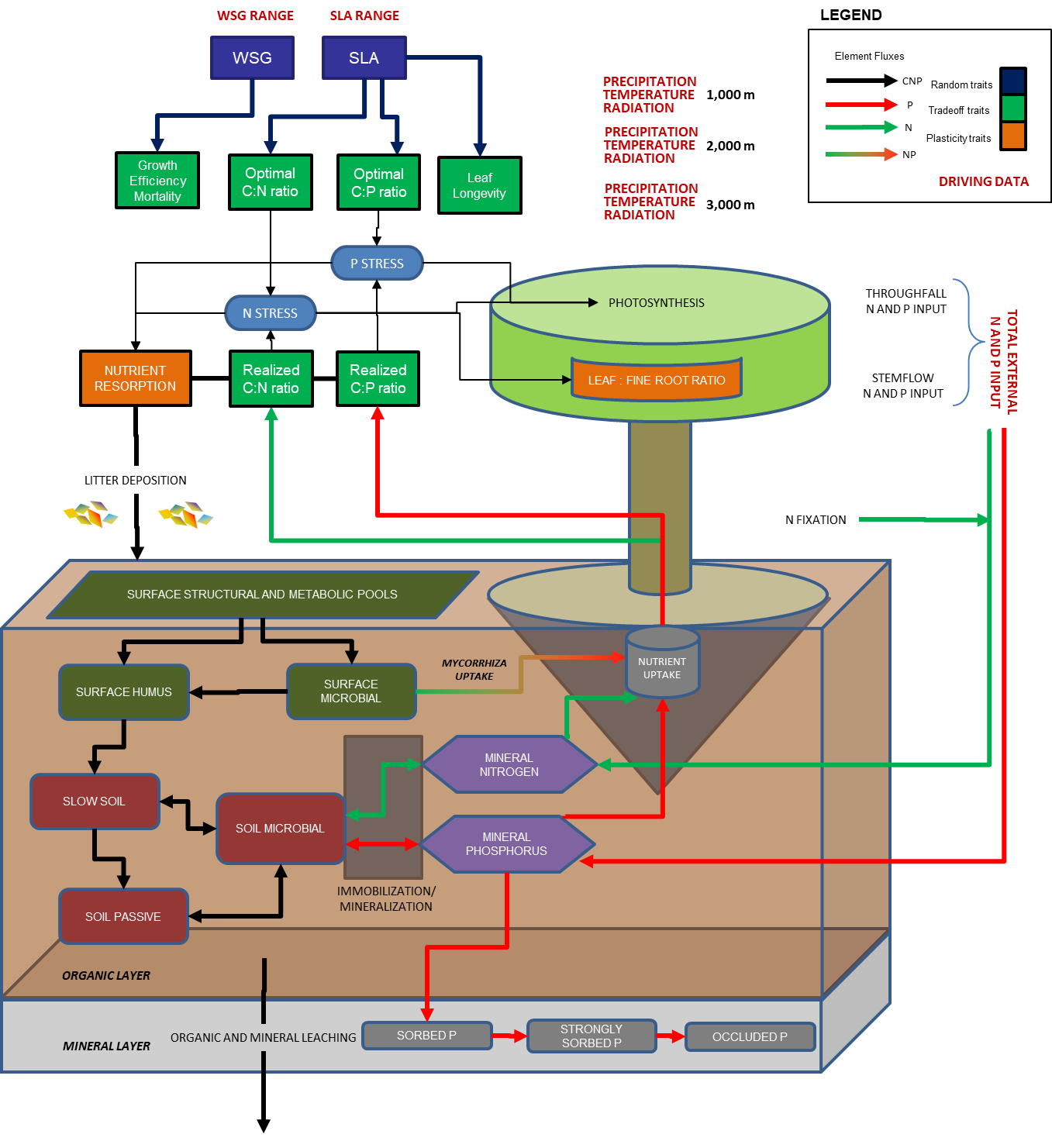A4 Plant functional trait diversity, biotic interactions and ecosystem processes in nutrient- versus water-limited tropical mountain forests. [funded by DFG]
PI(s) for this project:
Prof. Dr. Thomas Hickler
Abstract:
 In line with the objectives of the first phase of the RESPECT project, we have implemented plant trait variability in the dynamic regional to global vegetation model LPJ-GUESS (Lund-Potsdam-Jena General Ecosystem Simulator, www.nateko.lu.se/lpj-guess) to represent the high biodiversity in the mountains of southern Ecuador. The new model (LPJ-GUESS-NTD, Nutrient-Trait-Dynamics) woody individual has now an unique set of plant traits, and competition between individuals for resources (light, water, nitrogen [N] and phosphorous [P]) as well as their adaptation to abiotic factors (mainly temperature) and disturbances determines which individuals (and their respective traits) become dominant. The values of Specific Leaf Area (SLA) and Wood Specific Gravity (WSG) of woody plant individuals are randomized at establishment and other traits are derived by implementing measured relationships to these traits. Since individuals are limited by nutrient availability, and the nutrient cycle is represented by the model´s soil organic matter module, we were able to demonstrate by deactivating plant nutrient limitation and trait variation that nutrients are by far the main abiotic drivers of trait community assembly in the elevation gradient.
In line with the objectives of the first phase of the RESPECT project, we have implemented plant trait variability in the dynamic regional to global vegetation model LPJ-GUESS (Lund-Potsdam-Jena General Ecosystem Simulator, www.nateko.lu.se/lpj-guess) to represent the high biodiversity in the mountains of southern Ecuador. The new model (LPJ-GUESS-NTD, Nutrient-Trait-Dynamics) woody individual has now an unique set of plant traits, and competition between individuals for resources (light, water, nitrogen [N] and phosphorous [P]) as well as their adaptation to abiotic factors (mainly temperature) and disturbances determines which individuals (and their respective traits) become dominant. The values of Specific Leaf Area (SLA) and Wood Specific Gravity (WSG) of woody plant individuals are randomized at establishment and other traits are derived by implementing measured relationships to these traits. Since individuals are limited by nutrient availability, and the nutrient cycle is represented by the model´s soil organic matter module, we were able to demonstrate by deactivating plant nutrient limitation and trait variation that nutrients are by far the main abiotic drivers of trait community assembly in the elevation gradient.
While the disproportionate role of nutrient limitation is true for shaping the biodiversity of the tropical mountain forests of South Ecuador, this may not be case for other environments. In order to allow our model to produce realistic patterns of trait distributions along wider regional areas, we aim in the second phase of RESPECT to improve LPJ-GUESS-NTD to account better for water limitations, with the support of the data and expertise of the other subprojects. For this second phase, we hypothesize that differences in water availability and the length of the dry season are the main driver of the community trait composition and ecosystem functioning at our dry forest study sites, in sharp contrast to the nutrient-driven dynamics at the mountain rain forest. In addition we aim to explore further the impacts of plant herbivory and seed dispersal to ecosystem processes using the data collected from the first project phase.

